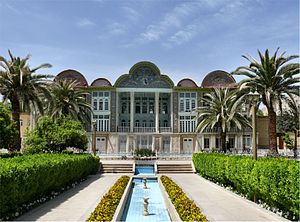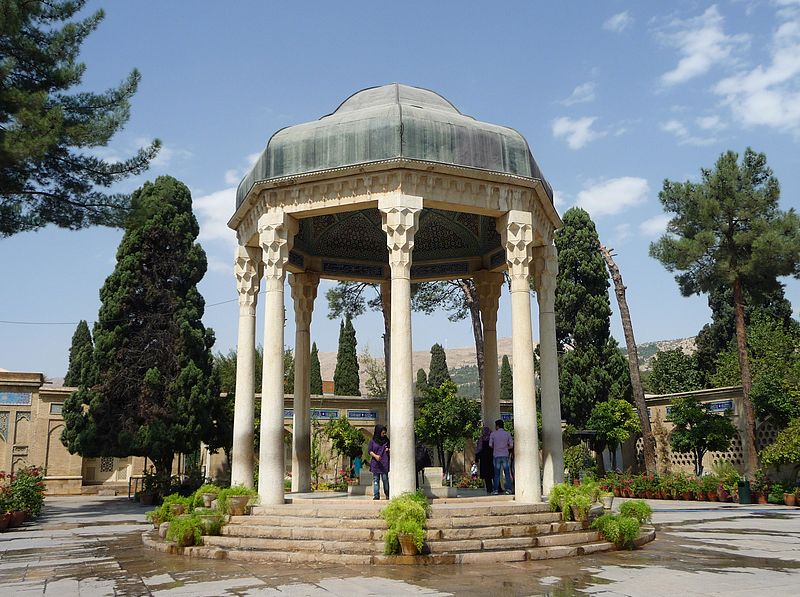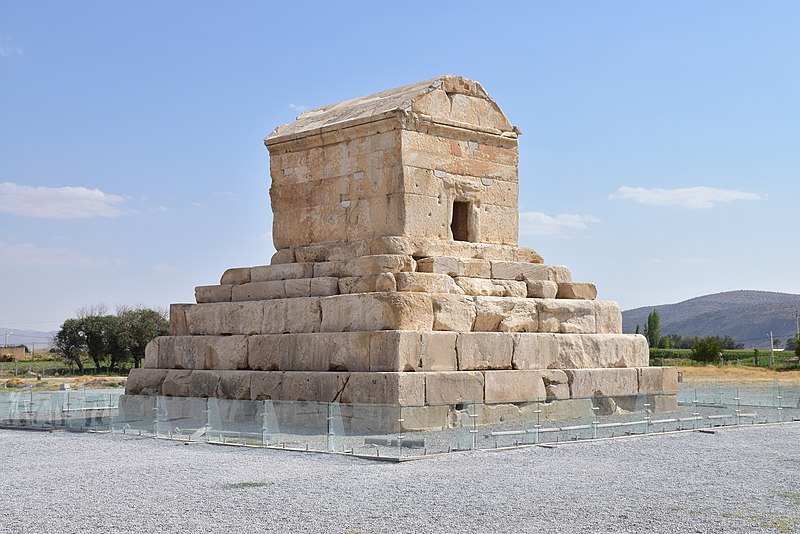Fārs Province also known as Pars or Persia in historical context, is one of the thirty-one provinces of Iran and known as the cultural capital of the Iran Era administrative center is Shiraz. It has an area of 122,400 km2. The etymology of the word Persian found in many ancient names associated with Iran, is derived from the historical importance of this region. Fars Province is the original homeland of the Persian people.

There are three distinct climatic regions in the Fārs Province. First, the mountainous area of the north and northwest with moderate cold winters and mild summers. Secondly, the central regions, with relatively rainy mild winters, and hot dry summers. The third region located in the south and southeast, has cold winters with hot summers.
The ancient Persians were present in the region from about the 10″century BC, and became the rulers of the largest empire the world had yet seen under the Achaemenid dynasty which was established in the mid-6th century BC, at its peak stretching from Thrace-Macedonia, Bulgaria-Paeonia and Eastern Europe proper in the west, to the Indus Valley in far east. The ruins of Persepolis and Pasargadae, two of the four capitals of the Achaemenid Empire, are located in Fars.

The Achaemenid Empire was defeated by Alexander the Great in 333 BC, incorporating most of their vast empire. The Seleucid Empire was subsequently defeated by the Parthians in 238 BC. By 205 BC, Antiochus III extended his authority into Persis and ceased to be an independent state. Babak was the ruler of a small town called Kheir. Babak’s efforts in gaining local power at the time escaped the attention of Artabanus IV, the Arsacid Emperor of the time. Babak and his eldest son Shäpour I managed to expand their power over all of Persis. Ardashir was crowned in 226 at Ctesiphon as the sole ruler of Persia, bringing the 400-year-old Parthian Empire to an end, and starting the virtually equally long rule of the Sassanian Empire, over an even larger territory, once again making Persia a leading power in the world, only this time along with its arch-rival and successor to Persia’s earlier opponents (the Roman Republic and the Roman Empire; the Byzantine Empire). The Sassanids ruled for 425 years, until the Muslim armies conquered the empire. Afterwards, the Persians started to convert to Islam, this making it much easier for the new Muslim empire to continue the expansion of Islam. Persis then passed hand to hand through numerous dynasties, leaving behind numerous historical and ancient monuments, each of which has its own values as a world heritage, reflecting the history of the nrovince Iran and West Asia. The ruins of Bishapour, Persepolis, and Firouz-Abad are all reminders of this. Arab invaders brought about a decline of Zoroastrian rule and made Islam ascendant from the century.

Färs province is one of the provinces that has the highest nomadic population. The culture of the Persian people in general is divided into celebrations, music, clothing and food. In the music section the Aashiqs, Qashqai, Changyan and Sarebanran are existing. The Aashiq music is ancient and extensive, mixed with folkloric poetry.
In Färs province, there are different ethnic groups including Fars, Lor, Turkish Qashqai, Tajik, Arab Khamseh, Kurd and Lak. One of the most important nomadic regions of Iran is Färs province, with a population of 137, 717 people, about 32 percent of the Iran nomadic population and 3 percent of the province’s population. In addition to Qashqai, Baseri, Baharloo, Mohseni, as well as smaller tribes, continue their nomadic life in Fars.

Fars people’s clothing is very diverse due to cultural diversity, which can be referred to as Qaba (Arkhaleq). shawl and Chaqeh(coat), which is the clothing of the nomadic tribes of Kouhmareh Sarakhas. The official language of the Färs province is, Farsi. Before Islam, the Persian language was the Middle Persian, which is nowadays changed into Persian and is used among most of the people of the province and Baseri tribe.

Reference: Cultural Heritage, Handicrafts & Tourism Organization of Iran, Iran Travel guide. Iran: 2018
